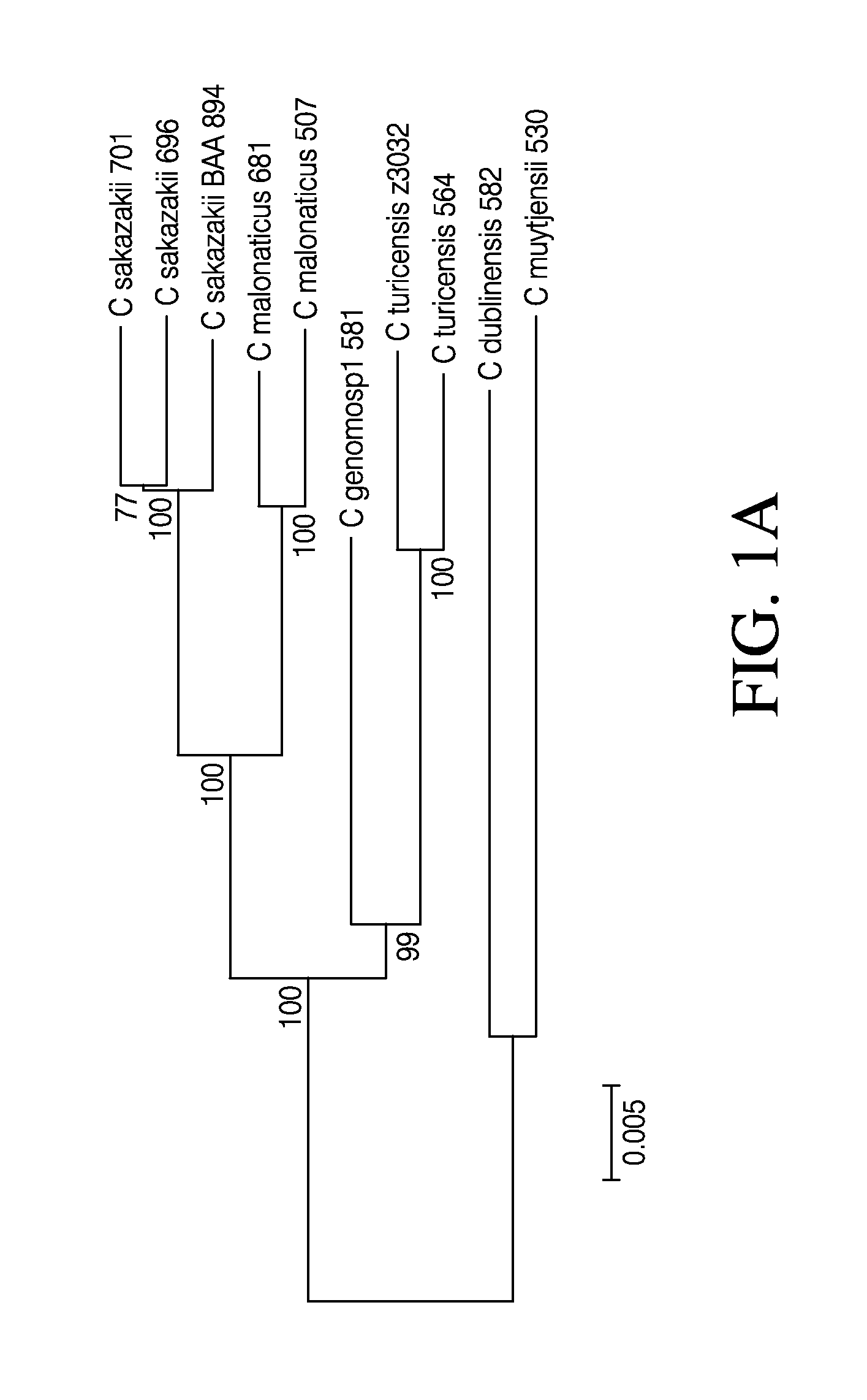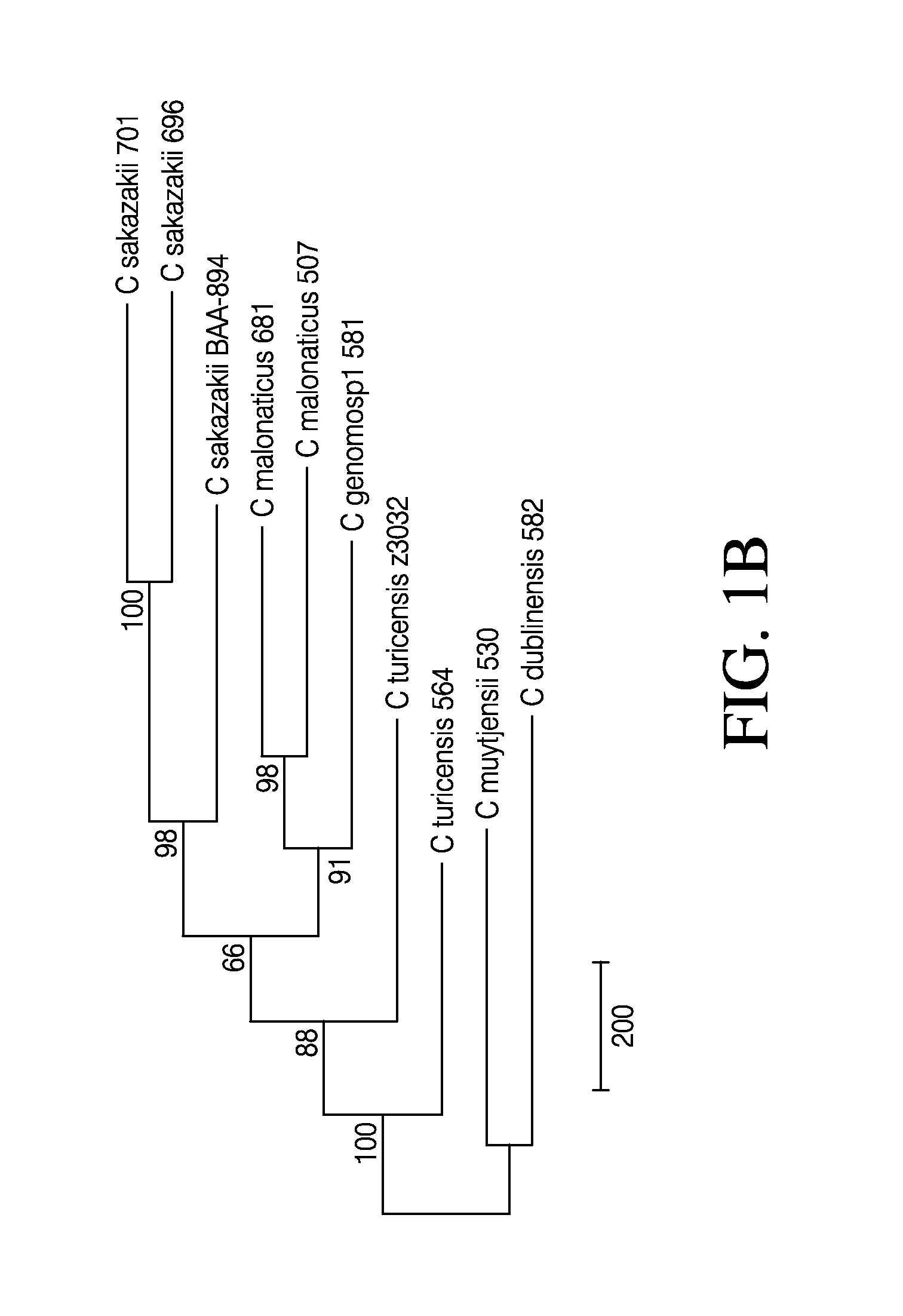Compositions and methods for detection of cronobacter spp. and cronobacter species and strains
a technology of cronobacter and spp., which is applied in the field of compositions, methods and kits for the detection and identification of cronobacter spp. and cronobacter species and strains, and can solve the problems of neurological impairment of infants who survive and infection of the central nervous system
- Summary
- Abstract
- Description
- Claims
- Application Information
AI Technical Summary
Benefits of technology
Problems solved by technology
Method used
Image
Examples
examples
[0210]Some embodiments of the present disclosure may be understood in connection with the following examples. However, one skilled in the art will readily appreciate the specific materials, compositions, and results described are merely illustrative of the disclosure, and are not intended to, nor should be construed to, limit the scope of the disclosure and its various embodiments.
example i
lection
[0211]Nine strains representing each of the six named species of Cronobacter spp. were selected. The selected strains include three C. sakazakii (strain 680, 696, 701), two C. malonaticus (681, 507), one C. muytjensii (530), one C. turicensis (564), one C. dublinensis (582), and one C. genomosp1 (581) strain. Among these, strain 701 is a C. sakazakii ST4 strain that has been strongly associated with neonatal meningitis (Joseph and Forsythe, 2011). The C. sakazakii BAA-894 strain sequence was used as a reference for the 696, 701, 680, 507 and 681 strain sequences, and the C. turicensis z3032 strain sequence was used as a reference for the 564, 582, 530 and 581 strain sequences, due to their availability as finished genome sequences in the public databases. Table 1 depicts the information on nine newly assembled Cronobacter genomes and two publicly available Cronobacter genomes.
TABLE 1GenomeMLSTRefseqsizeSequenceAccessionSpeciesStrainSource(Mbp)bTypeNumC. sakazakii696Clinical4....
example ii
uencing
[0213]Long mate-paired genomic DNA libraries with approximately 1.8 kb inserts were constructed for each strain from the isolated strain genomic DNA, and 2×50 bp reads were obtained from each pair. Sequencing was carried out to 2×50 base pairs using SOLiD™ chemistry (Applied Biosystems) according to the manufacturer's instructions.
[0214]Over 23-36 million reads, of approximately 500-800 fold coverage of the genomes, were obtained for each strain. The colorspace reads were error-corrected and then assembled using the SOLiD bacterial de novo assembly pipeline, which employs the velvet assembly engine (Zerbino and Birney, 2008). The nine genomes (696, 701, 680, 681, 507, 530, 564, 581, 582) (Table 2) were successfully de novo assembled into contigs and scaffolds. The ultimate genome assemblies contain 1600-5000 contigs with N50 of 2.0-5.5 kb and 260-2300 scaffolds with N50 of 76-600 kb.
Example III. Sequencing and Assembly of Nine Cronobacter Strain Genomes
[0215]In some embodimen...
PUM
| Property | Measurement | Unit |
|---|---|---|
| mass | aaaaa | aaaaa |
| nucleic acid sequence | aaaaa | aaaaa |
| nucleic acid | aaaaa | aaaaa |
Abstract
Description
Claims
Application Information
 Login to View More
Login to View More - R&D
- Intellectual Property
- Life Sciences
- Materials
- Tech Scout
- Unparalleled Data Quality
- Higher Quality Content
- 60% Fewer Hallucinations
Browse by: Latest US Patents, China's latest patents, Technical Efficacy Thesaurus, Application Domain, Technology Topic, Popular Technical Reports.
© 2025 PatSnap. All rights reserved.Legal|Privacy policy|Modern Slavery Act Transparency Statement|Sitemap|About US| Contact US: help@patsnap.com



